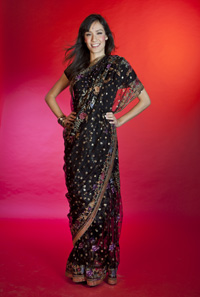
Casualwear boom impacts positively on knits at Ciel Textile
Karl Mayer’s HKS 3-M is said to be one of the most flexible, versatile machines in its product portfolio. The efficient, high-speed tricot machine features a particular type of knitting motion and special knitting elements and is said to be able to produce very fine as well as very chunky knitted constructions in a wide range of lappings for a variety of products. Karl Mayer says the repertoire of this all-round production machine includes automotive textiles,

21st December 2010
Knitting Industry
|
Obertshausen
 Karl Mayer’s HKS 3-M is said to be one of the most flexible, versatile machines in its product portfolio. The efficient, high-speed tricot machine features a particular type of knitting motion and special knitting elements and is said to be able to produce very fine as well as very chunky knitted constructions in a wide range of lappings for a variety of products.
Karl Mayer’s HKS 3-M is said to be one of the most flexible, versatile machines in its product portfolio. The efficient, high-speed tricot machine features a particular type of knitting motion and special knitting elements and is said to be able to produce very fine as well as very chunky knitted constructions in a wide range of lappings for a variety of products.
Karl Mayer says the repertoire of this all-round production machine includes automotive textiles, upholstery fabrics, sportswear, mosquito nets, cleaning textiles, fabrics for flags and banners and coating carriers. In addition, new product development has opened up a brand new end-use for the warp-knitted fabrics produced on the HKS 3-M, in the shape of embroidery grounds, carrier fabrics which are subsequently embroidered.
These airy marquisette fabrics are said to be particularly popular among Turkish net curtain manufacturers, especially since the last Heimtextil trade fair. In India, on the other hand, producers of saris are said to be becoming increasingly interested in the fabrics as carriers for decorative embroidery. Karl Mayer says this is further reinforced by the huge demand for the HKS 3-M as a result of the rapid growth of the Chinese artificial leather industry, where warp-knitted textiles are used as the backing substrates for PU or PVC coatings to produce animal hide effects.
The HKS 3-M can produce high-quality, fine marquisette fabrics in gauge E 28 for use as embroidery grounds. The small openings in the textile mesh structure are said to be absolutely symmetrical and produce a finished article with a neat appearance. The embroidery grounds produced on the machine are also slip-resistant and stable in the lengthwise and crosswise directions. These characteristics enable the embroidery process to be carried out at high speed. Karl Mayer emphasises that the reason for this exceptional processing performance is the special pattern design, which features a double weft and a pillar stitch lapping.
According to Karl Mayer, with their fine, dimensionally stable construction, the embroidery grounds produced on the HKS 3-M are becoming more and more established alongside the chunkier marquisette fabrics produced on the RSE series of machines, which is one of the machines that has been traditionally used until now. Compared to classic raschel-knitted textiles, Karl Mayer says the new machine is said to offer two advantages in terms of its efficiency: at a working width of 130 inches, its operating speed is almost 24% faster, and the investment outlay for buying the machine is also lower.
One of the materials that has proved to be suitable for producing composite materials, such as artificial leather, is a warp-knitted construction featuring the ‘trainer’ lapping – a construction that has become established for producing tracksuits. The soft, weft-raised fabric is produced on an HKS 3-M with a width of 210 inches in gauge E 28 and is made from a blend of 100% textured and untextured polyester. Unlike warp-knitted fabrics that are used as apparel fabrics, this semi-technical textile has a lower stitch number and modified yarn geometry. In this case, the change mainly relates to the position of the textured yarns. A relatively elastic fabric is produced which, as well as having excellent drapability, also has a soft handle and good resistance to tearing. These characteristics are not as important for furniture and clothing, but they are Karl Mayer says, required for producing luggage, bags and shoes.
As far as storage articles, clothing and running and walking gear are concerned, the coating that produces the animal hide look is usually applied to the smooth side of the fabric. This enables the soft, pleasant handle to be fully exploited during use.
Special expertise is needed to apply the PU or PVC material to the warp-knitted textile, especially to control the shrinkage. The change in format of the textile, which is caused by the heat, can quickly lead to delamination – especially in conjunction with the surface of the polyester, which is smoother than that of viscose or cotton. However, shrinkage can be controlled by carrying out the finishing process correctly.
It is said to be more advantageous to use polyester than cotton or viscose. The smooth outer side of the synthetic fibres creates a flat fabric surface without any protruding fibres, which normally have to be removed after raising by carrying out an additional shearing process.
The production of ‘trainer’ fabrics on the HKS 3-M is said to be particularly beneficial. Karl Mayer says that the warp-knitted coating substrate as a backing for imitation leather can be produced on the flexible tricot machine at an operating speed of 2400 rpm, which is a very high level of efficiency. These factors are said to have particularly impressed manufacturers in China, where the demand for the HKS-3M has been growing for several months.

Business intelligence for the fibre, textiles and apparel industries: technologies, innovations, markets, investments, trade policy, sourcing, strategy...
Find out more